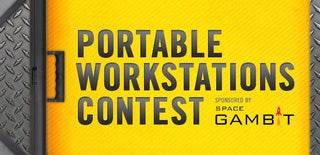Introduction: Bicycle Solar/Dynamo USB Charger + Tail Lights
Please click below to pre-order a production model!
http://www.kickstarter.com/projects/249225636/sola...
This system will combine the power from the sun and dynamo hub to double the power to a USB device like a smart phone and excess energy will be stored in Power Core. When not moving, Solarpad will compensate for the dynamo power loss, and when there's a shadow the dynamo will compensate for Solarpad power loss, which gives a more constant and reliable energy source while riding. Also, the dynamo is connected to an LED circuit that turns on automatically when the bicycle is in motion! During the day, it acts as a great daytime running light. A super capacitor ensures that the tail lights will stay on for a few minutes even after the bicycle has stopped at a stop light. This would be very useful to charge your phone while commuting in the city where lots of shadows and stops are frequent.
Step 1: Build the Circuit and Assemble the Solar Panel Bike Rack
Circuit parts include:
330QBK-ND 330OHM RESISTOR 1/4W 5% QTY: 1
P10791-ND SUPER CAPACITOR 0.1F 5.5V QTY: 1
30BQ015PBFCT-ND SCHOTTKY DIODE 350mV @3A QTY: 3
LM2940T-5.0/NOPB-ND 26Vin - 5Vout REGULATOR QTY: 1
5mm RED STRAW HAT LEDs QTY: 4 (they seem to be very bright and very affordable)
I got the idea for the super capacitor from this website: http://universalelectronix.blogspot.jp/2010/10/sup...
I made a Y-cable to come out of Solarpad and soldered the Schottky Diodes directly to the positive wires on the cable. One end of the Y-cable has a Male connector for the dynamo while the other end has pins that connect directly to the Power Core circuit. I chose to use these larger diodes because they had the smallest voltage drop for higher power output.
I used a hacksaw to slice a thin PCB, soldered the parts to it, and riveted the circuit to the edge of the Solarpad housing. To power the circuit, I spliced a portion of the Y-Cable with the male connector and soldered + and - leads to it. The regulator is required because I noticed that the dynohub can go over 10V at high speed. I also covered the circuit with epoxy to protect it from moisture.
I then modified a Topeak seat post bike rack by inserting Power Core in to the Topeak rack tube and replaced the entire rack with Solarpad. The Power Core female USB output cable and Male USB Y-cable routed inside Solarpad and exited underneath the bike seat where the dynamo and smart phone can connect to. You can test this assembly to make sure that it works by placing the bike rack in the sun and seeing if the Power Core LED turns on.
UPDATE 2/27/2014: The LEDs are supposed to be connected in parallel not series. The schematic has been updated to show the parallel LED connections.
Step 2: Connect the Dynamo Hub
Make sure you use a DC dynamo hub or else you will need an AC to DC converter. I chose the Sunup dynamo hub because it was easy to install without replacing the entire wheel. You can watch my video review and installation of the Sunup dyno hub here:
I had to modify the Sunup cable by soldering a Female USB Type A connector to it so that it would connect to the Male USB connector underneath the bike seat. After routing and connecting the wires, test it out and it see it charge and light up when pedaling! I think the tail lights pull about 3mA total. It's fully automatic so there is no need to turn it on or off. If you use a smart phone bicycle handlebar mount, you can route a charge cable from under the bike seat to your handlebars to charge and use your phone while you ride! You can also use it to power a bluetooth USB speaker for music on the bike!
The solar panel and dynamo hub are self-regulating because the diodes allow the higher voltage to win without bringing the voltage of the whole system down or creating reverse current. When the Solarpad and dynamo voltages are about the same, then the power is added together!
If you want to charge this device overnight or away from the bike, just unplug the dynamo, detach the bike rack, and plug the Male connector to a laptop, USB wall adapter, or any USB other port. The tail light will turn on indicating that it's charging!
If for some reason the dynamo hub is removed from your bike, you can still active the tail lights by plugging the Female USB connector to the Male USB connector on the bike rack.
If you want to add a circuit that turns on the tail lights automatically when it gets dark, you can add this circuit from this instructable https://www.instructables.com/id/Automatic-Bike-Tai...
Works great with Folding Bikes too!

Participated in the
Makerlympics Contest

Participated in the
Portable Workstations Contest

Participated in the
123D Circuits Contest

Participated in the
Full Spectrum Laser Contest

Participated in the
Spring's Coming Contest













